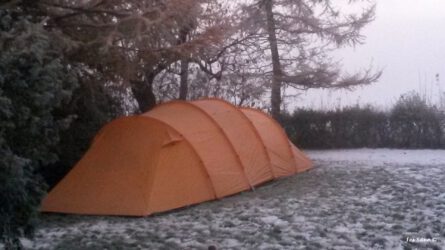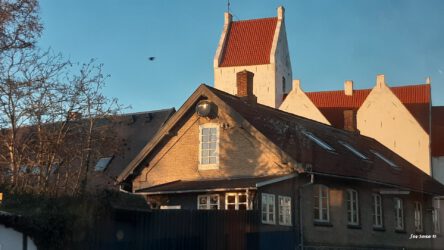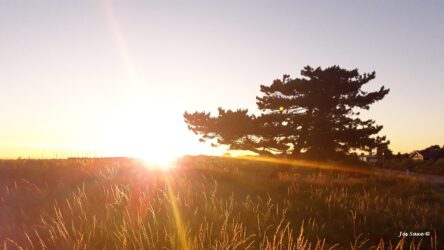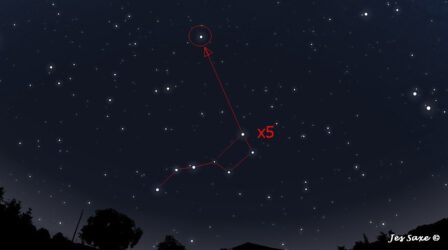Always staying in the nature is quality life for many, and most of the time we are there without a compass. You don’t have get lost or get wild neither by night if you learn some basic skills to make the nature guide you in the right directions.
I live in the Northern hemisphere, and have lots of experience getting around on trek, hike, bicycle, horseback, in cars and now and then at sea, just looking at a fix point and only very rarely on my compass. And apart from once I use to manage to get afternoon tea the right place at the right time.
But I always bring a handy pocket size non-electric powered analogue good old style compass with me just in the case I should come in a situation where I need stronger help by Mother Nature and having the magnetic lines of the Earth to help me reaching my destination, particularly in foggy weather.
And even if you don’t bring a handy compass or have lost it- you can learn easy and smart method to make an emergency compass for guiding you the main compass directions for North-South and East-West lines.
Take care for White Out
But I have to give you an advice, not running headless around in the wilderness. Some of the most dangerous weather to navigate in is heavy fog and heavy snow. You might easily loose all landmarks and fix points, and without a good compass, maps and GPS/GNSS-assistance, you might get lost in the wild before you know it and freeze to death. Stay safe were are until you can navigate. In our term we call it a White Out. Even in London City you might loose all visible landmarks and get lost without a compass as your best friend.

Time Compass and Sunlight destination
On the Northern Hemisphere, the sun is defined to be visible and rise from the compass direction EAST, then be highest on the sky in SOUTH about noon (1200 hour normal time), then slowly pass its way to WEST, where it use to go down in the sunset.
This definition also comes good knowing that timezone are defined by where the sun is highest on the sky by day, and per every 15 degree latitude we got a new timezone (one hour change). More or less with some zig zag to make a country the first to celebrate New Year with fireworks and happy champagne, or in practical regions like Europe (Union) where from the west of Bretagne in France to the Easy of Poland you travel over several time zones. But still, when the sun is highest on the sky its noon and the sun is to the SOUTH.
That gives you directly to determine that NORTH are the opposite (to your back), and standing a place at noon, looking up to the sun, EAST are to your LEFT direction and WEST to the right.
Or if you turn around and looking towards you got it reversed.
Use the Sun as landmark and pointer
- Knowing that, you got one free big tip here: when you set direction somewhere in the nature, remark the sun direction in you face, and at least up to noon, or from noon to sunrise, the sun must be in your face from that direction more less all the time. Apart from every full hour, add 30 degrees to the position in turning.
(360/24*2 =30. 360 compass dress, 24 hours, but only 12 on the clock face).As example, if you heading SOUTHEAST, the sun must come from you right side the whole day.In big shoe sizes you know then if you got the sun from the back (apart form late night) or the left side (apart from very very early morning) you are on the wrong direction.
Useing Mother Sun as compass gives you in big shoe sizes a direction.
Arctic Areas
In the arctic region North of the Polar Circle this is not what happens at winter. Its more or less dark most of the day. At summer time, the sun follows the same route but the sun is visible on the sky most of the night. That gives some challenges we come back to later in another post. Wearing a watch, compass and map helps you a lot.
Tv-Parabolic dishes towards SOUTH
- Find parabolic tv antenna – here they often towards the SOUTH (due to the geo-stationery trajectory of the satellites). On the Southern Hemisphere its opposite, the look towards the NORTH.
- At equator get a glass of rum & cola and look in that instead is you really don get help by that. They pointing more or less directly upwards.
Bell Towers of Churches towards WEST
- Old churches in the Nordic Countries tends to have the bell tower to the WEST side. Apart from a very few and round churches it use to go as pointer.

Ants
- Some places in a forest you can find openings, where ant builds their homes. They are often most placed in the NORTH sides as the sunshine heats most here.
Wind Tilting Trees
- Trees in Denmark tend to be formed by the strong wind from west and tilt to the EAST. This is due to the hard wind from the North Sea about 80% of the time.

Windy trees tilt towards EAST- Foto: Jes Saxe (c)
Moss on stone
- Big lonely stones that lay in dry land away from seawater or misty areas and small ponds tends to to have most moss on the NORTH shadow side of the stone (cant live on the south-side as the sunshine dries it dead).
Tree Fungus
Some sort of tree fungus have great pleasure living to the sunny side on dead trees. Here in Scandinavia its to the SOUTH side.

Photo: Jes Saxe (c)
Let the Stars guide you
- At night the stars might help you… Looking for the North Star a.k.a. Stella Polaris, can give you the direction to what we have defined as TRUE NORTH. The North Star itself is not very bright so we have to get some guidance and help by the big dipper, in Scandinavian known as Karlsvognen. Find the two rear stars in the bowl or “the wagon” as we call it here free translated, and multiple the distance between them upwards with 5 and the small stationary circumpolar not very bright star is the North Star.

How to find the North Star Stella Polaris. Illustration by Jes Saxe, made with help by stellarium.org
Use wrist watch old fashion style
- If you have an old style wrist watch, or can turn your handy smart watch into that, using the hands (dials) can give you a better accurate direction both at night and day and without the sun, the moon needed though, assuming your clock is adjust and not too far in adjustment from the determined “1200 hour at noon” time.At day the sun will always be from on sky in the compass directions 90 -180 -270 degrees, EAST, SOUTH, WEST equivalent to 0600 hour, 1200 hour and 1800 hour.Hence by daytime we always have the sun to the SOUTH-side!We can then deduct, at night the sun must be on the compass direction 270 – 360 – 90, WEST, NORTH, EAST, and equivalent 1800h, 2359h, and 0600 hour.Hence at night have the sun always toward the NORTH-side!Now take your watch and place it horizontal with the face upwards.Now turn the watch so the short dial points towards the clock.Now make a virtual line, or take a pencil place it halt between the the little dial and 1200 hour on your watch. You now have NORTH-SOUTH direction more precise.
Use the moon as guidance
By night, use some moon-tricks:
- If its full moon, and you look at it, you have the sun to the opposite direction.
- If its new moon, and you look at it, the sun shines on the opposite part of the moon, and you have sun to that direction.
- If the moon is Waxing (tiltagende), and looking at it, it got the sun to the right side.
- If the moon is Waning (aftagende) and looking at it, you got the sun to the left side.
Knowing this and having your watch you construct the rough NORTH-SOUTH direction.
Use a map and landmark or pylons
- If you have a map (everything but tourist maps) trying to compare easy recognizable landmarks on the map like a river, a bridge, roads, train trails, towers/pylons for radio and tv might give you information enough to turn the map in the North-South directions.
You might even be lucky to do geometric triangle by three landmarks or more by making lines from the landmarks to your position.
Make improvised primitive compass
- You can make a very primitive compass by something like a razor blade and swipe it on a knife or screwdriver, and fill a glass half with water. Place the razer blade on top of the water and floating around you might be lucky to have compass.